- Joined
- Jul 9, 2011
- Messages
- 2,759
- Points
- 48
https://www.wsj.com/articles/saudi-oil-tankers-attacked-before-entering-persian-gulf-11557725971
U.S. Says Iran Likely Behind Ship Attacks
Officials say two Saudi oil tankers and vessels from Norway and the U..A.E. were damaged
By
Summer Said in Dubai,
Nancy A. Youssef in Washington and
Benoit Faucon in London
Updated May 13, 2019 7:48 p.m. ET
An initial U.S. assessment indicated Iran likely was behind the attack on two Saudi Arabian oil tankers and two other vessels damaged over the weekend near the Strait of Hormuz, a U.S. official said, a finding that, if confirmed, wou
https://edition.cnn.com/2019/05/12/middleeast/uae-cargo-ship-sabotage-intl/index.html
Four ships targeted in mystery "sabotage attack," says UAE

By Nada Altaher and Ben Westcott, CNN
Updated 1347 GMT (2147 HKT) May 13, 2019
UAE reports acts of 'sabotage' against commercial ships 01:54
(CNN)Four ships were targeted on Sunday near the strategic Emirati port of Fujairah, in what the UAE described as a "sabotage attack." One was flying a UAE flag, and another the Norwegian flag. The other two were tankers owned by Saudi Arabia, which described the incident as a threat to the security of global oil supplies.
There were no injuries or deaths, according to the UAE Ministry of Foreign Affairs and International Cooperation. It did not elaborate on the nature of the alleged sabotage, or offer any indication as to who might be responsible.
Tensions have risen in the oil-rich region in recent weeks amid the deployment of a growing number of United States military assets to the Middle East, due to deteriorating relations with Iran.
Iran's Foreign Ministry spokesperson Seyyed Abbas Mousavi said Monday that the incidents were "alarming and regrettable," and requested further information on the alleged sabotage. He also warned against "plots by ill-wishers to disrupt regional security" and called for "vigilance of regional states in the face of any adventurism by foreign elements."
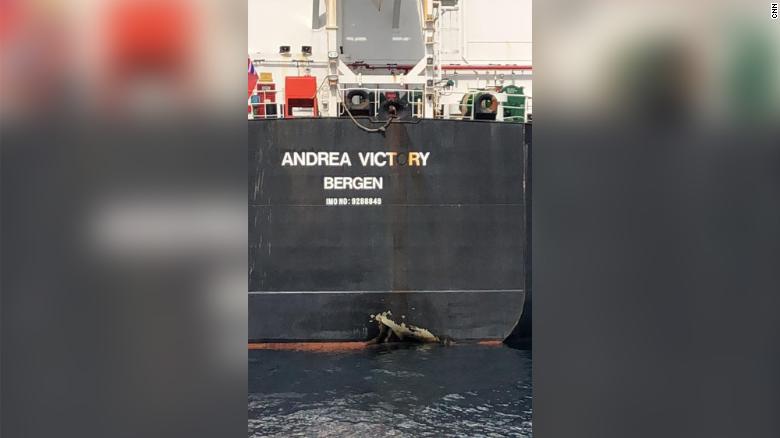
Images show damage sustained to the hull of Norwegian tanker Andrea Victory.
Several US officials are cautioning there is no final conclusion on how the ships were damaged. One US official pointed out the lack of detail from the UAE and Saudi Arabia about how the ships were damaged.
In a tweet, Emirati Minister of State for Foreign Affairs Anwar Gargash said investigations in the incident were ongoing but that the government had its "own readings and conclusions."
"The international community (needs to) assume its responsibilities to prevent any parties trying to undermine the security and safety of maritime traffic," the ministry said.
What we know
The incident took place near UAE territorial waters in the Gulf of Oman, east of the emirate of Fujairah, the country's Ministry of Foreign Affairs and International Cooperation said. The ministry added that authorities were working with local and international bodies to investigate the incident, which it described as a "dangerous development."
Images that CNN captured of the Norwegian tanker, Andrea Victory, show damage sustained to the hull of the vessel. In a statement Monday, Thome Ship Management, which manages the ship, confirmed it suffered hull damage after being struck by an unknown object at the waterline and said that it was not in any danger of sinking.
One of the Saudi vessels was on its way to be loaded with Saudi crude oil from the port of Ras Tanura, to be delivered to customers in the US, Saudi Arabia's state-run Saudi Press Agency (SPA) reported Monday. While the agency didn't mention casualties or oil spills, it did say there had been "significant damage to the structures of the two vessels."
On Monday, the UAE formally asked the US for technical assistance in assessing the vessels' damage, according to a US official. The US experts will look at the damage patterns, try to recover any material from the site, and determine if some kind of missile or weapon hit the ships.
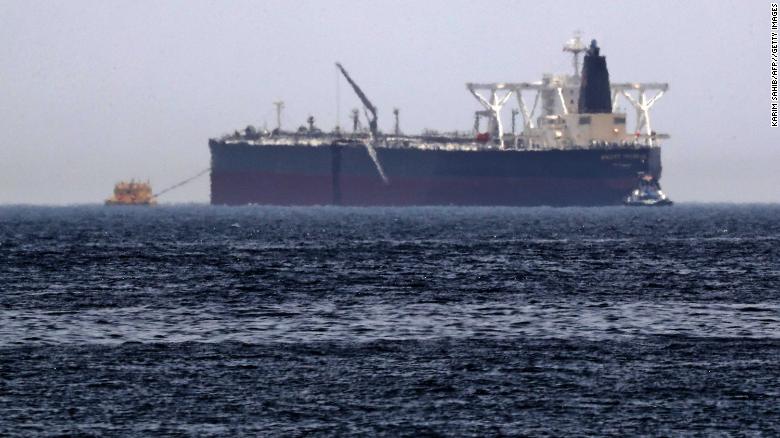
A Monday photo shows the oil tanker "Amjad," one of two Saudi-owned vessels Riyadh says were sabotaged.
Rumblings about Iran
Last week, the US Maritime Administration issued an advisory that "Iran or its proxies" could be targeting commercial vessels and oil production infrastructure in the region. The warning followed Iran's announcement that it was partially withdrawing from a landmark nuclear deal, the Joint Comprehensive Plan of Action, which the US itself unilaterally exited one year ago.
US Air Force F-15s and F-35s, along with B-52 bombers, are now flying visible air patrols over the Persian Gulf, according to a US official, who said that the flights were designed to demonstrate to both Iran and US allies that US forces are in a deterrence mode.
Several officials say that the US is continuing to conduct intelligence, surveillance and reconnaissance (ISR) flights in the Middle East.
Also on Monday, US Secretary of State Mike Pompeo canceled a planned visit to Moscow on Monday and flew to Brussels for talks on Iran with his counterparts from the UK, Germany, France.
Asked later that day if the US was going to war with Iran and if the US was seeking regime change there, Trump said, "We'll see what happens with Iran."
The Strait of Hormuz: A strategic passage
Iran borders the Persian Gulf (also known as the Arabian Gulf) and the Strait of Hormuz, a strategically important waterway.
The US Energy Information Administration calls the Strait of Hormuz "the world's most important oil transit chokepoint," with an estimated 20% of oil traded worldwide moving through the channel, which is about 30 miles wide at its narrowest point.
Saudi Arabian Energy Minister Khalid al-Falih described the incident as a deliberate attempt to "undermine the freedom of maritime navigation, and the security of oil supplies to consumers all over the world."
A senior source at Saudi Arabia's ministry of energy told CNN that the attacks were particularly alarming because the tankers were targeted outside the Strait of Hormuz.
Oil prices rose by nearly 2% at one point on Monday in the wake of the Saudi claims of sabotage.
UAE denied earlier reports
The accusations of sabotage come less than 24 hours after the UAE government denied reports alleging that seven oil tankers were involved in an explosion in the port of Fujairah on Sunday morning.
The reports were carried first by Lebanon's pro-Hezbollah Al-Mayadeen satellite channel and later picked up by Iran's state-owned Press TV and other outlets.
"The operations at the port are going as normal," a statement from the Emirates News Agency said Sunday. "Media outlets must be responsible and rely on official sources."
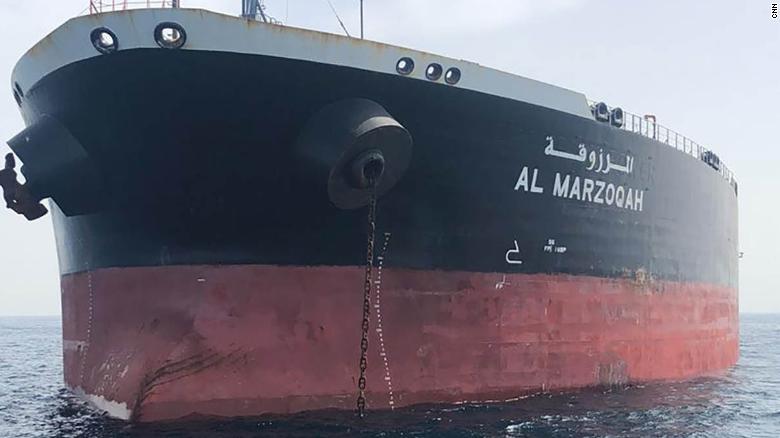
The "Al-Marzoqah" tanker belongs to the privately-owned Dubai-based Red Sea Marine Services firm, which was established in Jeddah in 1987.
In a statement Sunday, the Gulf Cooperation Council condemned those reported "sabotage operations," with council General Secretary Abdul Latif bin Rashid al-Zayani calling the incident a "dangerous escalation (that) speaks of the evil intentions" of whoever carried out the attack.
CNN's Mohammed Elshamy and Karen Smith in Atlanta, Nada AlTaher in Abu Dhabi and Barbara Starr in Washington, DC contributed to this article.
https://www.washingtonpost.com/worl...e9-bd25-c989555e7766_story.html?noredirect=on
Middle East
Two Saudi oil tankers, Norwegian ship apparently attacked near the Persian Gulf amid rising Iran tensions
By Liz Sly
May 13 at 2:34 PM
BEIRUT — Two Saudi Arabian oil tankers and a Norwegian ship were damaged over the weekend near the Persian Gulf in what Saudi Arabia claimed Monday was an “act of sabotage,” further heightening regional tensions with Iran.
There was no immediate indication as to who may have been responsible or why the damage was inflicted, but the incidents occurred at the same time and place off the coast of the United Arab Emirates only days after the United States has dispatched warships and bombers to the area to deter alleged threats from Iran.
The location is near a sea lane critical to the world’s supply of oil, and the incidents followed a warning by U.S. maritime authorities that Iran might seek to disrupt commercial shipping in the area.
One of the Saudi tankers had been preparing to deliver oil to the United States, and both incurred “significant damage” as a result of the apparent attack at around 6 a.m. Sunday morning, Saudi Energy Minister Khalid al-Falih said in a statement reported by the official Saudi news agency.
[Iranian threats led to White House’s deployment announcement, U.S. officials say]
A statement from Thome Ship Management, the owners of the Norwegian-flagged vessel, said an “unknown object” had created a hole in the hull of one of its ships, the MT Andrea Victory. Photographs of the ship showing a hole just above the waterline have been published, according to the Associated Press.

The Nimitz-class aircraft carrier USS Abraham Lincoln transitions the Suez Canal on May 9. (U.S. Navy/Dvids/EPA-EFE/Shutterstock)
Neither Saudi Arabia nor the United Arab Emirates produced photographs to support claims that Saudi tankers had been damaged. Falih said the apparent attacks did not cause any casualties or oil spills, and they did not attribute blame for the apparent sabotage.
The incidents coincide, however, with a surge in U.S.-Iranian tensions after the United States said last week that it has received intelligence that Iran was planning some kind of attack on U.S. forces in the Middle East.
In response to the threat, the Pentagon dispatched reinforcements to the Persian Gulf, including an aircraft carrier, a Patriot missile battery and a squadron of B-52 bombers. The moves prompted Iran to warn that it is prepared to retaliate if it is attacked.
Iran’s Foreign Ministry condemned the possible shipping attacks as “alarming and regrettable” and said it would have a “negative effect” on shipping safety and maritime security, according to the Iranian Students’ News Agency.
Abbas Mousavi, a Foreign Ministry spokesman, suggested that the sabotage might have been carried out as part of a conspiracy to ignite conflict in the region. He cautioned against what he called “plots by ill-wishers to disrupt regional security” and called for an inquiry.
Iran also announced last week that it would pull out of parts of its 2015 nuclear deal with major world powers and step up uranium enrichment, raising concern among the accord’s remaining signatories that it will soon collapse altogether.
Speaking in Brussels, British Foreign Minister Jeremy Hunt warned of the risk that the tensions could trigger an unintended conflict in the region.
“We are very worried about the risk of a conflict happening by accident with an escalation that is unintended,” he told reporters ahead of a European Union meeting later Monday about ways to salvage the deal.
[The oil route that could become central to the mounting tensions between Iran and the U.S.]
The spike in tensions comes after the Trump administration’s decision to lift sanctions waivers from eight countries that import Iranian oil, in a bid to bring Iran’s exports down to “zero,” according to U.S. officials. Iranian imports had already plunged after the United States reimposed sanctions in November, following the Trump administration’s decision to pull out of the Iran nuclear accord. The expiration of the waivers is expected to inflict further pain on Iran’s already reeling economy.
It was not immediately clear whether the two Saudi vessels that were damaged were among four ships that the United Arab Emirates said Sunday were sabotaged in the same area. Hours before the UAE reported the damage to the ships, Iran-linked news outlets had circulated reports that a big attack on the port at Fujairah had set fire to seven ships. Those have since been proved false.
The U.S. maritime authority reissued an earlier warning after the Sunday attacks that Iran might seek to target commercial shipping in the area, the Associated Press reported.
“Since early May, there is an increased possibility that Iran and/or its regional proxies could take action against U.S. and partner interests, including oil production infrastructure, after recently threatening to close the Strait of Hormuz,” an earlier warning issued last week said. “Iran or its proxies could respond by targeting commercial vessels, including oil tankers, or U.S. military vessels in the Red Sea, Bab-el-Mandeb Strait or the Persian Gulf.”
The State Department also updated a travel advisory to U.S. citizens in Iraq on Monday that was issued in the wake of the rising tensions last week. Among other threats, the advisory cautioned Americans of the risk posed by “anti-U.S. sectarian militias,” a reference to the Iranian-backed Shiite militias that play a powerful role in Iraq.
The latest advisory simply warned: “Do not travel to Iraq.”
Iraq is one of the locations where Iran may be plotting to attack U.S. interests, U.S. officials have told American news outlets.
Read more:
The oil route that could become central to the mounting tensions between Iran and the U.S.
Pompeo crashes Brussels meeting of E.U. diplomats for Iran talks
Today’s coverage from Post correspondents around the world
Like Washington Post World on Facebook and stay updated on foreign news
https://www.janes.com/article/88464/uae-saudi-arabia-say-ships-attacked-off-al-fujairah
To read the full article, Client Login
Military Capabilities
UAE, Saudi Arabia say ships attacked off Al-Fujairah
Jeremy Binnie, London - Jane's Defence Weekly
13 May 2019
Follow
RSS
Four commercial ships were subjected to sabotage operations east of Al-Fujairah in the Gulf of Oman on 12 May, the Ministry of Foreign Affairs of the UAE said in a statement posted on its website.
It said the attacks happened near the country’s territorial waters and that there were no injuries, fatalities, or spillages.
It did not identify the vessels or the attackers but described the incident as “a serious development”. It also said that media reports of explosions at Al-Fujairah’s port were “baseless and unfounded”.
Saudi Arabia’s Minister of Energy Khalid al-Falih confirmed the incident, saying two Saudi oil tankers had been subjected to a sabotage attack at 0600 h local time in the UAE’s exclusive economic zone as they travelled towards the Strait of Hormuz, the Saudi Press Agency reported.
Want to read more? For analysis on this article and access to all our insight content, please enquire about our subscription options at ihsmarkit.com/janes
https://mil.news.sina.com.cn/jssd/2019-05-14/doc-ihvhiqax8514734.shtml
海湾多艘油轮遇袭爆炸 张召忠:伊朗嫌疑最大美国第二
海湾多艘油轮遇袭爆炸 张召忠:伊朗嫌疑最大美国第二
1,017
多家外媒12日报道,霍尔木兹海峡附近阿联酋海域近发生爆炸,7-10艘油轮发生大火。
13日,阿联酋否认“连环爆炸”,不过还有四艘商船在阿联酋水域遭到恶意攻击。沙特方面确认:两艘油轮在12日早晨于阿联酋海域遭到攻击,导致“严重损伤”,其中一艘是运往美国的。
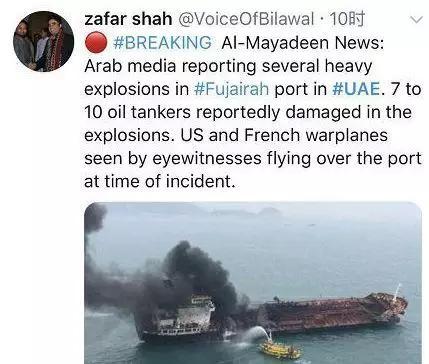
美国对此发出警告,称伊朗可能对该地区的海上交通造成威胁。美国的发声让人嗅到了一种熟悉的味道,像极了战争的前奏曲。
伊朗外交部对此做出澄清,说跟伊朗一毛钱的关系都没有,同时声称要警惕任何“恶意分子精心策划的阴谋”与“外国势力的冒险主义”。
目前美国的航母和轰炸机已经包围了波斯湾,集结在伊朗附近,蓬佩奥说:“我们的目标不是战争,是改变伊朗领导层的行为。”为了回应伊朗可能对美国发动攻击,美国还部署了一组爱国者导弹在伊朗附近,并派遣运输舰“阿灵顿号”到伊朗附近。

B-52轰炸机
(来源:波音公司)
伊朗现在被美国极限施压,被美国堵在家门口,自己想出出不去,外面想进进不来,伊朗不会坐以待毙,现在又出油轮被袭击的事件,颇有山雨欲来风满楼的气息。
有“前科”的伊朗
这个油轮被袭击是谁干的?目前尚不清楚,不过历史上伊朗倒是真的干过类似的事情。
两伊战争打了八年,我们都知道美国是支持伊拉克的,战争进行到中期,伊拉克率先开启了袭船战,频繁攻击去往伊朗的油轮。伊朗为了报复,不仅攻击伊拉克的石油设施和油轮,还开始针对所有支持伊拉克的第三国商船和油轮。
1984年就有37艘商船和油轮遭到袭击,1985年为50艘,1986年达到84艘,其中由伊朗进行的袭击增加了三倍。
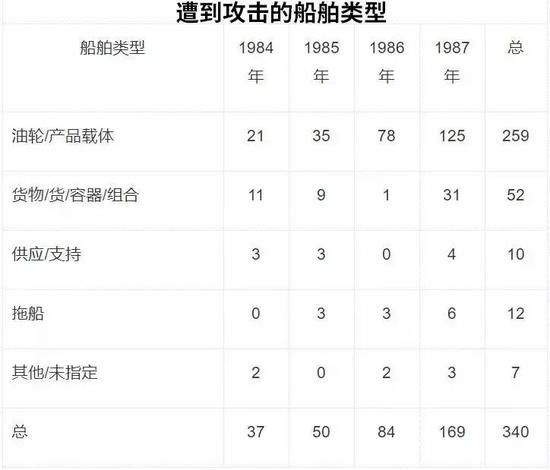
(来源:华盛顿邮报)
尤其是科威特,仅1986年就有28艘去往科威特的商船和油轮被袭击,科威特没办法只能请联合国来护航,美国同意为科威特护航,结果相当于火上浇油,有了美国护航的科威特被攻击的更加猛烈,仅1987年头四个月就有16艘船遭到袭击。
1987年6月,里根总统为科威特护航派了一支50艘舰艇组成的海军特混舰队,包括航母、巡洋舰、驱逐舰、核潜艇和150多架飞机。
当时伊朗封锁了霍尔木兹海峡,战争期间的伊朗十分敏感,美国浩大的舰队开赴过来,伊朗直接对美国的护航舰队发动了攻击,在海湾水域布置鱼雷,并且使用武装快艇对美国舰队发起了自杀式攻击。
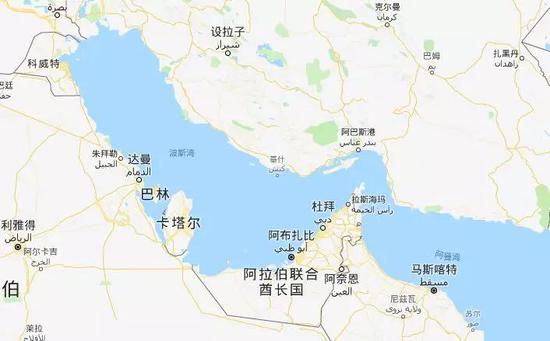
1987年7月22日,美护航舰队第一次护送科威特油轮进入海湾,便有2艘巨型油轮触雷爆炸,一艘40万吨超级油轮被炸伤。之后,接连被水雷炸伤或破损。
双方你来我往几个月后搞得美国很没面子,于是在10月19日,美国对使用4艘驱逐舰对伊朗的一个海上石油钻井平台进行炮击,随后伊朗宣称美国全面卷入战争,伊朗将进行毁灭性报复。
在1988年4月4日美国护卫舰再次触雷后,美国进一步向海湾地区增兵,扩大护航范围,使用舰载直升机驱逐和攻击伊朗舰船,直到两伊战争结束前几天,美国还误射炮弹击落了一架伊朗民航客机,导致290人全部遇难。
真凶到底是谁?
本次油轮遭到攻击背后,有人策划了这一切,可疑的有美国、伊朗、沙特、恐怖分子!
虽然表面上看所有的矛头似乎都指向了伊朗,伊朗也确实有动机,毕竟美国的舰队都摆在家门口了,侧面骚扰一下美国,打击一下美国的盟友沙特对伊朗也是极好的,一切也都是合乎情理的,毕竟伊朗还有“前科”。
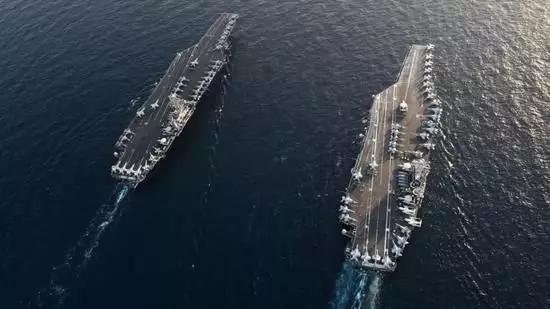
美国“林肯”号和“斯坦尼斯”号航空母舰照片
(来源:RT)
美国是第二大嫌疑人,虽有其中有一艘油轮是运往美国的,但恰恰是有一艘油轮是去美国的才有被攻击的价值,美国就可以以此为借口进一步对伊朗实施封锁,甚至为美国动武提供了借口,美国以小计使伊朗背上随便攻击第三国家的恶名赢得国际社会的认可也算是“师出有名”。
不过美国如果想出兵也没有必要这么做,参考美国攻击伊拉克,那时候的理由是伊拉克有核武器,现在美国完全可以用一样的理由。如果这件事是美国做的,那么对美国有利的地方就是给伊朗扣一个“罪恶”的大帽子,让国际社会看到伊朗随便攻击第三国家的嘴脸,美国肯定还会对此事进行后续炒作。反正不管是谁干的,美国都会把账算到伊朗头上。
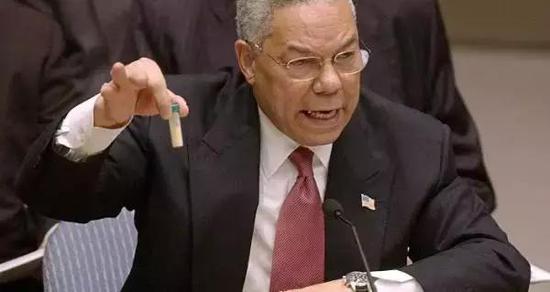
鲍威尔:这个试管里有生化武器!普京:可能是洗衣粉!
(来源:CNN)
沙特自己干的?沙特完全没必要这么做,没有动机和缘由,现在美国和伊朗对峙,沙特完全没有必要横插进来,前面有美国顶着,坐收渔翁之利就好,除非沙特想让美国跟伊朗早点打起来。
最合乎情理的就是恐怖分子干的,“恐怖分子”这个词真的挺好用的,总能当到背锅侠。
就算是恐怖分子干的,在这种特殊时间节点和特殊位置攻击沙特的油轮,怎么看似乎都有人背后支持。
此次油轮遇袭只是一个开始,给扑朔迷离的中东局势增添了一份危机感,双方的斗争将进一步加剧。
如果伊朗真的无路可走,封锁霍尔木兹海峡是必然选择,霍尔木兹海峡控制着全球三分之一的石油贸易,全球油价势必暴涨,全球局势都会陷入动荡之中。(作者署名:局座张召忠)
Many tankers in the bay were attacked and exploded. Zhang Zhaozhong: Iran is suspected of the largest US second
May 14, 2019 09:19 Sina Military
1,017
A number of foreign media reported on the 12th that an explosion occurred in the waters of the UAE near the Strait of Hormuz, and 7-10 tankers had a fire.
On the 13th, the UAE denied the "serial explosion", but four merchant ships were maliciously attacked in the waters of the UAE. The Saudi side confirmed that the two tankers were attacked in the UAE waters on the morning of the 12th, causing "serious damage", one of which was shipped to the United States.
The United States warned that Iran may pose a threat to maritime traffic in the area. The American voice made people smell a familiar taste, like a prelude to war.
The Iranian Foreign Ministry has clarified this, saying that there is no relationship with Iran's dime, and at the same time it claims to be alert to any "concealed conspiracy by malicious elements" and "adventurism of foreign forces."
At present, the US aircraft carrier and bomber have surrounded the Persian Gulf and assembled near Iran. Pompeo said: "Our goal is not to war, but to change the behavior of the Iranian leadership." In response to Iran's possible attack on the United States, the United States also deployed A group of Patriot missiles were near Iran and dispatched the transport ship "Arlington" to near Iran.
B-52 bomber
(Source: Boeing Company)
Iran is now being pressured by the United States, and it is blocked by the United States. If you want to go out, you can’t get in, Iran will not sit still, and now the tanker is attacked. It’s quite full of rain. The atmosphere of the building.
Iran with "pre-existing"
Who did this tanker be attacked? It is not clear at this time, but in history Iran has actually done something similar.
The Iran-Iraq war has been in operation for eight years. We all know that the United States supports Iraq. When the war is in the middle of the war, Iraq has taken the lead in launching a warship attack and frequently attacking tankers going to Iran. In retaliation, Iran not only attacked Iraq’s oil facilities and tankers, but also began to target all third-party merchant ships and tankers supporting Iraq.
In 1984, 37 merchant ships and tankers were attacked, 50 in 1985 and 84 in 1986, of which the number of attacks by Iran tripled.
(Source: Washington Post)
In Kuwait in particular, in 1986 alone, 28 merchant ships and tankers going to Kuwait were attacked. Kuwait could not only ask the United Nations to escort. The United States agreed to escort Kuwait. The result was equivalent to fueling the fire. Kuwait was attacked even more violently, and only 16 ships were attacked in the first four months of 1987.
In June 1987, President Reagan sent a fleet of 50 ships to the Kuwaiti escort, including aircraft carriers, cruisers, destroyers, nuclear submarines and more than 150 aircraft.
At that time, Iran blocked the Strait of Hormuz. Iran was very sensitive during the war. The vast fleet of the United States came over. Iran directly attacked the US escort fleet, arranged torpedoes in the Gulf waters, and launched an American fleet with armed speedboats. Suicide attack.
On July 22, 1987, the US escort fleet escorted the Kuwaiti tanker into the bay for the first time. Two giant tankers exploded and a 400,000-ton supertanker was wounded. After that, it was injured or damaged by water mines.
The two sides came to me a few months later and made the United States very faceless. So on October 19, the United States bombarded an offshore oil rig on Iran using four destroyers. Then Iran declared that the United States was fully involved in the war, Iran. Destructive retaliation will take place.
After the US frigate hit thunder again on April 4, 1988, the United States further increased its troops to the Gulf region, expanded its escort range, and used ship-borne helicopters to expel and attack Iranian ships. Until the end of the Iran-Iraq war, the United States also misfired. The shells shot down an Iranian passenger airliner, killing all 290 people.
Who is the real murderer?
Behind the attack on this tanker, someone planned it all. Suspicious people are the United States, Iran, Saudi Arabia, and terrorists!
Although on the surface all the spearheads seem to point to Iran, Iran does have motives. After all, the US fleet is at home, side harassing the United States, and attacking the US ally Saudi Arabia is also very good for Iran, everything is also good. It makes sense. After all, Iran has a "pre-existing".
Photo of US "Lincoln" and "Stannis" aircraft carrier
(Source: RT)
The United States is the second-largest suspect. Although one of the tankers is destined for the United States, it is precisely because there is a tanker that is going to the United States to be attacked. The United States can use this as an excuse to further blockade Iran. It provides an excuse for the US to use force. The United States has made Iran’s recognition of the indiscriminate attack on the third country’s notoriety to win the recognition of the international community.
However, if the United States wants to send troops, it is not necessary to do so. Referring to the United States attacking Iraq, the reason at that time was that Iraq had nuclear weapons. Now the United States can use the same reason. If this is done by the United States, then what is good for the United States is to give Iran a big "sin" hat to let the international community see Iran’s casual attack on the face of a third country. The United States will certainly follow up on this matter. Hype. Anyway, no matter who does it, the United States will count the accounts on Iran.
Powell: There are biochemical weapons in this test tube! Putin: It may be washing powder!
(Source: CNN)
What did Saudi Arabia do for himself? There is absolutely no need for Saudi Arabia to do this. There is no motive or reason. Now the United States and Iran confront each other. There is absolutely no need for Saudi Arabia to cross in. There is a United States in front of it. It’s good to take advantage of the fishermen’s interests, unless Saudi Arabia wants the United States to fight Iran earlier. stand up.
The most reasonable thing is that terrorists do it. The word "terrorist" is really easy to use, and it can always be a back pot.
Even if the terrorists are doing this, attacking the Saudi tanker at this special time node and special location, it seems that there are people behind it.
The attack on the tanker was only the beginning, adding a sense of crisis to the confusing situation in the Middle East, and the struggle between the two sides will be further aggravated.
If Iran really has no way to go, blocking the Strait of Hormuz is an inevitable choice. The Strait of Hormuz controls one-third of the world's oil trade. The global oil price is bound to skyrocket and the global situation will be in turmoil. (Author's signature: Bureau of Zhang Zhaozhong)
U.S. Says Iran Likely Behind Ship Attacks
Officials say two Saudi oil tankers and vessels from Norway and the U..A.E. were damaged
By
Summer Said in Dubai,
Nancy A. Youssef in Washington and
Benoit Faucon in London
Updated May 13, 2019 7:48 p.m. ET
An initial U.S. assessment indicated Iran likely was behind the attack on two Saudi Arabian oil tankers and two other vessels damaged over the weekend near the Strait of Hormuz, a U.S. official said, a finding that, if confirmed, wou
https://edition.cnn.com/2019/05/12/middleeast/uae-cargo-ship-sabotage-intl/index.html
Four ships targeted in mystery "sabotage attack," says UAE

By Nada Altaher and Ben Westcott, CNN
Updated 1347 GMT (2147 HKT) May 13, 2019
UAE reports acts of 'sabotage' against commercial ships 01:54
(CNN)Four ships were targeted on Sunday near the strategic Emirati port of Fujairah, in what the UAE described as a "sabotage attack." One was flying a UAE flag, and another the Norwegian flag. The other two were tankers owned by Saudi Arabia, which described the incident as a threat to the security of global oil supplies.
There were no injuries or deaths, according to the UAE Ministry of Foreign Affairs and International Cooperation. It did not elaborate on the nature of the alleged sabotage, or offer any indication as to who might be responsible.
Tensions have risen in the oil-rich region in recent weeks amid the deployment of a growing number of United States military assets to the Middle East, due to deteriorating relations with Iran.
Iran's Foreign Ministry spokesperson Seyyed Abbas Mousavi said Monday that the incidents were "alarming and regrettable," and requested further information on the alleged sabotage. He also warned against "plots by ill-wishers to disrupt regional security" and called for "vigilance of regional states in the face of any adventurism by foreign elements."

Images show damage sustained to the hull of Norwegian tanker Andrea Victory.
Several US officials are cautioning there is no final conclusion on how the ships were damaged. One US official pointed out the lack of detail from the UAE and Saudi Arabia about how the ships were damaged.
In a tweet, Emirati Minister of State for Foreign Affairs Anwar Gargash said investigations in the incident were ongoing but that the government had its "own readings and conclusions."
"The international community (needs to) assume its responsibilities to prevent any parties trying to undermine the security and safety of maritime traffic," the ministry said.
What we know
The incident took place near UAE territorial waters in the Gulf of Oman, east of the emirate of Fujairah, the country's Ministry of Foreign Affairs and International Cooperation said. The ministry added that authorities were working with local and international bodies to investigate the incident, which it described as a "dangerous development."
Images that CNN captured of the Norwegian tanker, Andrea Victory, show damage sustained to the hull of the vessel. In a statement Monday, Thome Ship Management, which manages the ship, confirmed it suffered hull damage after being struck by an unknown object at the waterline and said that it was not in any danger of sinking.
One of the Saudi vessels was on its way to be loaded with Saudi crude oil from the port of Ras Tanura, to be delivered to customers in the US, Saudi Arabia's state-run Saudi Press Agency (SPA) reported Monday. While the agency didn't mention casualties or oil spills, it did say there had been "significant damage to the structures of the two vessels."
On Monday, the UAE formally asked the US for technical assistance in assessing the vessels' damage, according to a US official. The US experts will look at the damage patterns, try to recover any material from the site, and determine if some kind of missile or weapon hit the ships.

A Monday photo shows the oil tanker "Amjad," one of two Saudi-owned vessels Riyadh says were sabotaged.
Rumblings about Iran
Last week, the US Maritime Administration issued an advisory that "Iran or its proxies" could be targeting commercial vessels and oil production infrastructure in the region. The warning followed Iran's announcement that it was partially withdrawing from a landmark nuclear deal, the Joint Comprehensive Plan of Action, which the US itself unilaterally exited one year ago.
US Air Force F-15s and F-35s, along with B-52 bombers, are now flying visible air patrols over the Persian Gulf, according to a US official, who said that the flights were designed to demonstrate to both Iran and US allies that US forces are in a deterrence mode.
Several officials say that the US is continuing to conduct intelligence, surveillance and reconnaissance (ISR) flights in the Middle East.
Also on Monday, US Secretary of State Mike Pompeo canceled a planned visit to Moscow on Monday and flew to Brussels for talks on Iran with his counterparts from the UK, Germany, France.
Asked later that day if the US was going to war with Iran and if the US was seeking regime change there, Trump said, "We'll see what happens with Iran."
The Strait of Hormuz: A strategic passage
Iran borders the Persian Gulf (also known as the Arabian Gulf) and the Strait of Hormuz, a strategically important waterway.
The US Energy Information Administration calls the Strait of Hormuz "the world's most important oil transit chokepoint," with an estimated 20% of oil traded worldwide moving through the channel, which is about 30 miles wide at its narrowest point.
Saudi Arabian Energy Minister Khalid al-Falih described the incident as a deliberate attempt to "undermine the freedom of maritime navigation, and the security of oil supplies to consumers all over the world."
A senior source at Saudi Arabia's ministry of energy told CNN that the attacks were particularly alarming because the tankers were targeted outside the Strait of Hormuz.
Oil prices rose by nearly 2% at one point on Monday in the wake of the Saudi claims of sabotage.
UAE denied earlier reports
The accusations of sabotage come less than 24 hours after the UAE government denied reports alleging that seven oil tankers were involved in an explosion in the port of Fujairah on Sunday morning.
The reports were carried first by Lebanon's pro-Hezbollah Al-Mayadeen satellite channel and later picked up by Iran's state-owned Press TV and other outlets.
"The operations at the port are going as normal," a statement from the Emirates News Agency said Sunday. "Media outlets must be responsible and rely on official sources."

The "Al-Marzoqah" tanker belongs to the privately-owned Dubai-based Red Sea Marine Services firm, which was established in Jeddah in 1987.
In a statement Sunday, the Gulf Cooperation Council condemned those reported "sabotage operations," with council General Secretary Abdul Latif bin Rashid al-Zayani calling the incident a "dangerous escalation (that) speaks of the evil intentions" of whoever carried out the attack.
CNN's Mohammed Elshamy and Karen Smith in Atlanta, Nada AlTaher in Abu Dhabi and Barbara Starr in Washington, DC contributed to this article.
https://www.washingtonpost.com/worl...e9-bd25-c989555e7766_story.html?noredirect=on
Middle East
Two Saudi oil tankers, Norwegian ship apparently attacked near the Persian Gulf amid rising Iran tensions
By Liz Sly
May 13 at 2:34 PM
BEIRUT — Two Saudi Arabian oil tankers and a Norwegian ship were damaged over the weekend near the Persian Gulf in what Saudi Arabia claimed Monday was an “act of sabotage,” further heightening regional tensions with Iran.
There was no immediate indication as to who may have been responsible or why the damage was inflicted, but the incidents occurred at the same time and place off the coast of the United Arab Emirates only days after the United States has dispatched warships and bombers to the area to deter alleged threats from Iran.
The location is near a sea lane critical to the world’s supply of oil, and the incidents followed a warning by U.S. maritime authorities that Iran might seek to disrupt commercial shipping in the area.
One of the Saudi tankers had been preparing to deliver oil to the United States, and both incurred “significant damage” as a result of the apparent attack at around 6 a.m. Sunday morning, Saudi Energy Minister Khalid al-Falih said in a statement reported by the official Saudi news agency.
[Iranian threats led to White House’s deployment announcement, U.S. officials say]
A statement from Thome Ship Management, the owners of the Norwegian-flagged vessel, said an “unknown object” had created a hole in the hull of one of its ships, the MT Andrea Victory. Photographs of the ship showing a hole just above the waterline have been published, according to the Associated Press.

The Nimitz-class aircraft carrier USS Abraham Lincoln transitions the Suez Canal on May 9. (U.S. Navy/Dvids/EPA-EFE/Shutterstock)
Neither Saudi Arabia nor the United Arab Emirates produced photographs to support claims that Saudi tankers had been damaged. Falih said the apparent attacks did not cause any casualties or oil spills, and they did not attribute blame for the apparent sabotage.
The incidents coincide, however, with a surge in U.S.-Iranian tensions after the United States said last week that it has received intelligence that Iran was planning some kind of attack on U.S. forces in the Middle East.
In response to the threat, the Pentagon dispatched reinforcements to the Persian Gulf, including an aircraft carrier, a Patriot missile battery and a squadron of B-52 bombers. The moves prompted Iran to warn that it is prepared to retaliate if it is attacked.
Iran’s Foreign Ministry condemned the possible shipping attacks as “alarming and regrettable” and said it would have a “negative effect” on shipping safety and maritime security, according to the Iranian Students’ News Agency.
Abbas Mousavi, a Foreign Ministry spokesman, suggested that the sabotage might have been carried out as part of a conspiracy to ignite conflict in the region. He cautioned against what he called “plots by ill-wishers to disrupt regional security” and called for an inquiry.
Iran also announced last week that it would pull out of parts of its 2015 nuclear deal with major world powers and step up uranium enrichment, raising concern among the accord’s remaining signatories that it will soon collapse altogether.
Speaking in Brussels, British Foreign Minister Jeremy Hunt warned of the risk that the tensions could trigger an unintended conflict in the region.
“We are very worried about the risk of a conflict happening by accident with an escalation that is unintended,” he told reporters ahead of a European Union meeting later Monday about ways to salvage the deal.
[The oil route that could become central to the mounting tensions between Iran and the U.S.]
The spike in tensions comes after the Trump administration’s decision to lift sanctions waivers from eight countries that import Iranian oil, in a bid to bring Iran’s exports down to “zero,” according to U.S. officials. Iranian imports had already plunged after the United States reimposed sanctions in November, following the Trump administration’s decision to pull out of the Iran nuclear accord. The expiration of the waivers is expected to inflict further pain on Iran’s already reeling economy.
It was not immediately clear whether the two Saudi vessels that were damaged were among four ships that the United Arab Emirates said Sunday were sabotaged in the same area. Hours before the UAE reported the damage to the ships, Iran-linked news outlets had circulated reports that a big attack on the port at Fujairah had set fire to seven ships. Those have since been proved false.
The U.S. maritime authority reissued an earlier warning after the Sunday attacks that Iran might seek to target commercial shipping in the area, the Associated Press reported.
“Since early May, there is an increased possibility that Iran and/or its regional proxies could take action against U.S. and partner interests, including oil production infrastructure, after recently threatening to close the Strait of Hormuz,” an earlier warning issued last week said. “Iran or its proxies could respond by targeting commercial vessels, including oil tankers, or U.S. military vessels in the Red Sea, Bab-el-Mandeb Strait or the Persian Gulf.”
The State Department also updated a travel advisory to U.S. citizens in Iraq on Monday that was issued in the wake of the rising tensions last week. Among other threats, the advisory cautioned Americans of the risk posed by “anti-U.S. sectarian militias,” a reference to the Iranian-backed Shiite militias that play a powerful role in Iraq.
The latest advisory simply warned: “Do not travel to Iraq.”
Iraq is one of the locations where Iran may be plotting to attack U.S. interests, U.S. officials have told American news outlets.
Read more:
The oil route that could become central to the mounting tensions between Iran and the U.S.
Pompeo crashes Brussels meeting of E.U. diplomats for Iran talks
Today’s coverage from Post correspondents around the world
Like Washington Post World on Facebook and stay updated on foreign news
https://www.janes.com/article/88464/uae-saudi-arabia-say-ships-attacked-off-al-fujairah
To read the full article, Client Login
Military Capabilities
UAE, Saudi Arabia say ships attacked off Al-Fujairah
Jeremy Binnie, London - Jane's Defence Weekly
13 May 2019
Follow
RSS
Four commercial ships were subjected to sabotage operations east of Al-Fujairah in the Gulf of Oman on 12 May, the Ministry of Foreign Affairs of the UAE said in a statement posted on its website.
It said the attacks happened near the country’s territorial waters and that there were no injuries, fatalities, or spillages.
It did not identify the vessels or the attackers but described the incident as “a serious development”. It also said that media reports of explosions at Al-Fujairah’s port were “baseless and unfounded”.
Saudi Arabia’s Minister of Energy Khalid al-Falih confirmed the incident, saying two Saudi oil tankers had been subjected to a sabotage attack at 0600 h local time in the UAE’s exclusive economic zone as they travelled towards the Strait of Hormuz, the Saudi Press Agency reported.
Want to read more? For analysis on this article and access to all our insight content, please enquire about our subscription options at ihsmarkit.com/janes
https://mil.news.sina.com.cn/jssd/2019-05-14/doc-ihvhiqax8514734.shtml
海湾多艘油轮遇袭爆炸 张召忠:伊朗嫌疑最大美国第二
海湾多艘油轮遇袭爆炸 张召忠:伊朗嫌疑最大美国第二
1,017
多家外媒12日报道,霍尔木兹海峡附近阿联酋海域近发生爆炸,7-10艘油轮发生大火。
13日,阿联酋否认“连环爆炸”,不过还有四艘商船在阿联酋水域遭到恶意攻击。沙特方面确认:两艘油轮在12日早晨于阿联酋海域遭到攻击,导致“严重损伤”,其中一艘是运往美国的。

美国对此发出警告,称伊朗可能对该地区的海上交通造成威胁。美国的发声让人嗅到了一种熟悉的味道,像极了战争的前奏曲。
伊朗外交部对此做出澄清,说跟伊朗一毛钱的关系都没有,同时声称要警惕任何“恶意分子精心策划的阴谋”与“外国势力的冒险主义”。
目前美国的航母和轰炸机已经包围了波斯湾,集结在伊朗附近,蓬佩奥说:“我们的目标不是战争,是改变伊朗领导层的行为。”为了回应伊朗可能对美国发动攻击,美国还部署了一组爱国者导弹在伊朗附近,并派遣运输舰“阿灵顿号”到伊朗附近。

B-52轰炸机
(来源:波音公司)
伊朗现在被美国极限施压,被美国堵在家门口,自己想出出不去,外面想进进不来,伊朗不会坐以待毙,现在又出油轮被袭击的事件,颇有山雨欲来风满楼的气息。
有“前科”的伊朗
这个油轮被袭击是谁干的?目前尚不清楚,不过历史上伊朗倒是真的干过类似的事情。
两伊战争打了八年,我们都知道美国是支持伊拉克的,战争进行到中期,伊拉克率先开启了袭船战,频繁攻击去往伊朗的油轮。伊朗为了报复,不仅攻击伊拉克的石油设施和油轮,还开始针对所有支持伊拉克的第三国商船和油轮。
1984年就有37艘商船和油轮遭到袭击,1985年为50艘,1986年达到84艘,其中由伊朗进行的袭击增加了三倍。

(来源:华盛顿邮报)
尤其是科威特,仅1986年就有28艘去往科威特的商船和油轮被袭击,科威特没办法只能请联合国来护航,美国同意为科威特护航,结果相当于火上浇油,有了美国护航的科威特被攻击的更加猛烈,仅1987年头四个月就有16艘船遭到袭击。
1987年6月,里根总统为科威特护航派了一支50艘舰艇组成的海军特混舰队,包括航母、巡洋舰、驱逐舰、核潜艇和150多架飞机。
当时伊朗封锁了霍尔木兹海峡,战争期间的伊朗十分敏感,美国浩大的舰队开赴过来,伊朗直接对美国的护航舰队发动了攻击,在海湾水域布置鱼雷,并且使用武装快艇对美国舰队发起了自杀式攻击。

1987年7月22日,美护航舰队第一次护送科威特油轮进入海湾,便有2艘巨型油轮触雷爆炸,一艘40万吨超级油轮被炸伤。之后,接连被水雷炸伤或破损。
双方你来我往几个月后搞得美国很没面子,于是在10月19日,美国对使用4艘驱逐舰对伊朗的一个海上石油钻井平台进行炮击,随后伊朗宣称美国全面卷入战争,伊朗将进行毁灭性报复。
在1988年4月4日美国护卫舰再次触雷后,美国进一步向海湾地区增兵,扩大护航范围,使用舰载直升机驱逐和攻击伊朗舰船,直到两伊战争结束前几天,美国还误射炮弹击落了一架伊朗民航客机,导致290人全部遇难。
真凶到底是谁?
本次油轮遭到攻击背后,有人策划了这一切,可疑的有美国、伊朗、沙特、恐怖分子!
虽然表面上看所有的矛头似乎都指向了伊朗,伊朗也确实有动机,毕竟美国的舰队都摆在家门口了,侧面骚扰一下美国,打击一下美国的盟友沙特对伊朗也是极好的,一切也都是合乎情理的,毕竟伊朗还有“前科”。

美国“林肯”号和“斯坦尼斯”号航空母舰照片
(来源:RT)
美国是第二大嫌疑人,虽有其中有一艘油轮是运往美国的,但恰恰是有一艘油轮是去美国的才有被攻击的价值,美国就可以以此为借口进一步对伊朗实施封锁,甚至为美国动武提供了借口,美国以小计使伊朗背上随便攻击第三国家的恶名赢得国际社会的认可也算是“师出有名”。
不过美国如果想出兵也没有必要这么做,参考美国攻击伊拉克,那时候的理由是伊拉克有核武器,现在美国完全可以用一样的理由。如果这件事是美国做的,那么对美国有利的地方就是给伊朗扣一个“罪恶”的大帽子,让国际社会看到伊朗随便攻击第三国家的嘴脸,美国肯定还会对此事进行后续炒作。反正不管是谁干的,美国都会把账算到伊朗头上。

鲍威尔:这个试管里有生化武器!普京:可能是洗衣粉!
(来源:CNN)
沙特自己干的?沙特完全没必要这么做,没有动机和缘由,现在美国和伊朗对峙,沙特完全没有必要横插进来,前面有美国顶着,坐收渔翁之利就好,除非沙特想让美国跟伊朗早点打起来。
最合乎情理的就是恐怖分子干的,“恐怖分子”这个词真的挺好用的,总能当到背锅侠。
就算是恐怖分子干的,在这种特殊时间节点和特殊位置攻击沙特的油轮,怎么看似乎都有人背后支持。
此次油轮遇袭只是一个开始,给扑朔迷离的中东局势增添了一份危机感,双方的斗争将进一步加剧。
如果伊朗真的无路可走,封锁霍尔木兹海峡是必然选择,霍尔木兹海峡控制着全球三分之一的石油贸易,全球油价势必暴涨,全球局势都会陷入动荡之中。(作者署名:局座张召忠)
Many tankers in the bay were attacked and exploded. Zhang Zhaozhong: Iran is suspected of the largest US second
May 14, 2019 09:19 Sina Military
1,017
A number of foreign media reported on the 12th that an explosion occurred in the waters of the UAE near the Strait of Hormuz, and 7-10 tankers had a fire.
On the 13th, the UAE denied the "serial explosion", but four merchant ships were maliciously attacked in the waters of the UAE. The Saudi side confirmed that the two tankers were attacked in the UAE waters on the morning of the 12th, causing "serious damage", one of which was shipped to the United States.
The United States warned that Iran may pose a threat to maritime traffic in the area. The American voice made people smell a familiar taste, like a prelude to war.
The Iranian Foreign Ministry has clarified this, saying that there is no relationship with Iran's dime, and at the same time it claims to be alert to any "concealed conspiracy by malicious elements" and "adventurism of foreign forces."
At present, the US aircraft carrier and bomber have surrounded the Persian Gulf and assembled near Iran. Pompeo said: "Our goal is not to war, but to change the behavior of the Iranian leadership." In response to Iran's possible attack on the United States, the United States also deployed A group of Patriot missiles were near Iran and dispatched the transport ship "Arlington" to near Iran.
B-52 bomber
(Source: Boeing Company)
Iran is now being pressured by the United States, and it is blocked by the United States. If you want to go out, you can’t get in, Iran will not sit still, and now the tanker is attacked. It’s quite full of rain. The atmosphere of the building.
Iran with "pre-existing"
Who did this tanker be attacked? It is not clear at this time, but in history Iran has actually done something similar.
The Iran-Iraq war has been in operation for eight years. We all know that the United States supports Iraq. When the war is in the middle of the war, Iraq has taken the lead in launching a warship attack and frequently attacking tankers going to Iran. In retaliation, Iran not only attacked Iraq’s oil facilities and tankers, but also began to target all third-party merchant ships and tankers supporting Iraq.
In 1984, 37 merchant ships and tankers were attacked, 50 in 1985 and 84 in 1986, of which the number of attacks by Iran tripled.
(Source: Washington Post)
In Kuwait in particular, in 1986 alone, 28 merchant ships and tankers going to Kuwait were attacked. Kuwait could not only ask the United Nations to escort. The United States agreed to escort Kuwait. The result was equivalent to fueling the fire. Kuwait was attacked even more violently, and only 16 ships were attacked in the first four months of 1987.
In June 1987, President Reagan sent a fleet of 50 ships to the Kuwaiti escort, including aircraft carriers, cruisers, destroyers, nuclear submarines and more than 150 aircraft.
At that time, Iran blocked the Strait of Hormuz. Iran was very sensitive during the war. The vast fleet of the United States came over. Iran directly attacked the US escort fleet, arranged torpedoes in the Gulf waters, and launched an American fleet with armed speedboats. Suicide attack.
On July 22, 1987, the US escort fleet escorted the Kuwaiti tanker into the bay for the first time. Two giant tankers exploded and a 400,000-ton supertanker was wounded. After that, it was injured or damaged by water mines.
The two sides came to me a few months later and made the United States very faceless. So on October 19, the United States bombarded an offshore oil rig on Iran using four destroyers. Then Iran declared that the United States was fully involved in the war, Iran. Destructive retaliation will take place.
After the US frigate hit thunder again on April 4, 1988, the United States further increased its troops to the Gulf region, expanded its escort range, and used ship-borne helicopters to expel and attack Iranian ships. Until the end of the Iran-Iraq war, the United States also misfired. The shells shot down an Iranian passenger airliner, killing all 290 people.
Who is the real murderer?
Behind the attack on this tanker, someone planned it all. Suspicious people are the United States, Iran, Saudi Arabia, and terrorists!
Although on the surface all the spearheads seem to point to Iran, Iran does have motives. After all, the US fleet is at home, side harassing the United States, and attacking the US ally Saudi Arabia is also very good for Iran, everything is also good. It makes sense. After all, Iran has a "pre-existing".
Photo of US "Lincoln" and "Stannis" aircraft carrier
(Source: RT)
The United States is the second-largest suspect. Although one of the tankers is destined for the United States, it is precisely because there is a tanker that is going to the United States to be attacked. The United States can use this as an excuse to further blockade Iran. It provides an excuse for the US to use force. The United States has made Iran’s recognition of the indiscriminate attack on the third country’s notoriety to win the recognition of the international community.
However, if the United States wants to send troops, it is not necessary to do so. Referring to the United States attacking Iraq, the reason at that time was that Iraq had nuclear weapons. Now the United States can use the same reason. If this is done by the United States, then what is good for the United States is to give Iran a big "sin" hat to let the international community see Iran’s casual attack on the face of a third country. The United States will certainly follow up on this matter. Hype. Anyway, no matter who does it, the United States will count the accounts on Iran.
Powell: There are biochemical weapons in this test tube! Putin: It may be washing powder!
(Source: CNN)
What did Saudi Arabia do for himself? There is absolutely no need for Saudi Arabia to do this. There is no motive or reason. Now the United States and Iran confront each other. There is absolutely no need for Saudi Arabia to cross in. There is a United States in front of it. It’s good to take advantage of the fishermen’s interests, unless Saudi Arabia wants the United States to fight Iran earlier. stand up.
The most reasonable thing is that terrorists do it. The word "terrorist" is really easy to use, and it can always be a back pot.
Even if the terrorists are doing this, attacking the Saudi tanker at this special time node and special location, it seems that there are people behind it.
The attack on the tanker was only the beginning, adding a sense of crisis to the confusing situation in the Middle East, and the struggle between the two sides will be further aggravated.
If Iran really has no way to go, blocking the Strait of Hormuz is an inevitable choice. The Strait of Hormuz controls one-third of the world's oil trade. The global oil price is bound to skyrocket and the global situation will be in turmoil. (Author's signature: Bureau of Zhang Zhaozhong)

